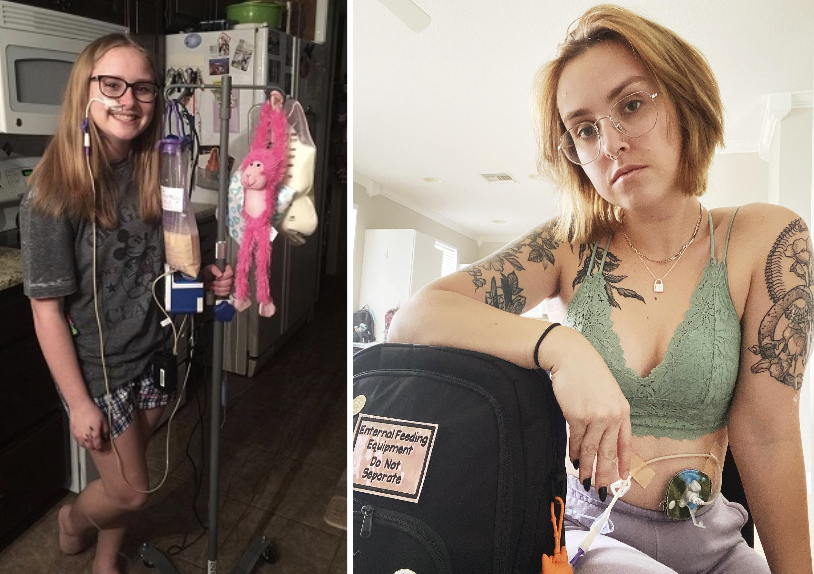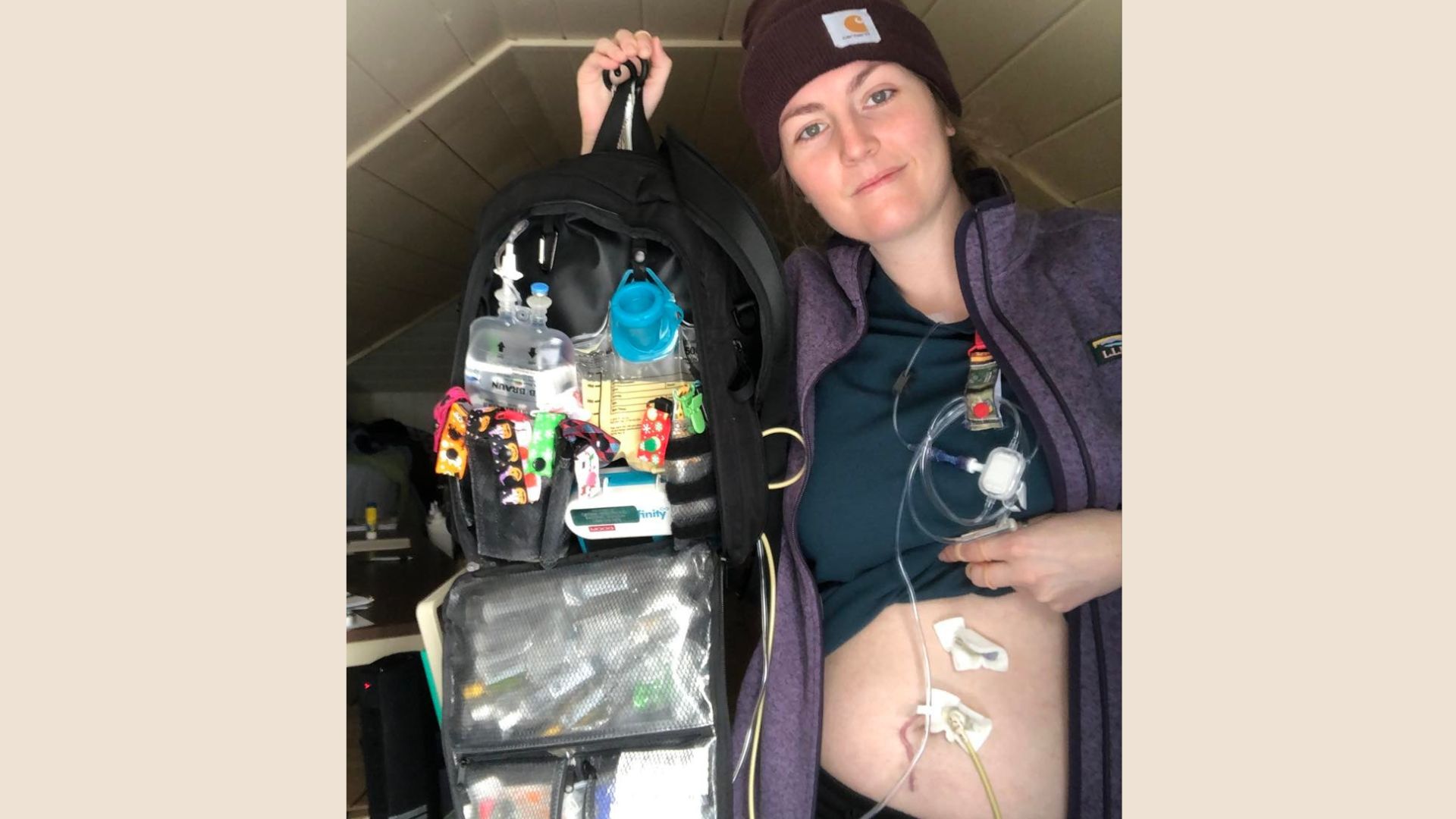Getting a feeding tube comes with a lot of baggage — literally! Administering feeds requires a lot of tubie gear. There are the staples – feeds, pump, skin barrier, and cleaner – that are crucial to tube feeds. But many other products can make life so much easier! We’ve asked our tubie friends what gear made a difference for them, and compiled this list of recommendations.
Note: always ask your care team before using a new product to make sure it’s a good fit for your body.
The right pump
The hospital will provide a pump for you, but not all brands are the same! If there’s something about your pump that doesn’t work for you, ask about other options. For example, if you have difficulty lifting heavy or bulky objects, the first pump offered may not be a great choice.
Infusion backpack
Another universal recommendation was to get a good infusion backpack to carry everything in. Your hospital may provide a bag, but they tend to be less than ideal – too large to easily carry, too small to fit everything, not enough pockets to stay organized, not rugged enough to withstand heavy use, or simply unattractive. It’s ok to want a bag that doesn’t scream “PATIENT” when you’re out and about! The Fluid Motion Backpack is made to look subtle and stylish, but also has compartments for feeds, infusions, two pumps, ice packs, and all the rest of your gear, including laptops and daily items like your phone and keys.

Tubie clips
As our Friend Kiera put it, “tubie clips are the MVP!” They attach to your clothes so you can loop the excess tubing into them. This keeps the tubing out of the way but also protects you if the tube gets caught or pulled – it yanks on the clip rather than the tube and intestines. Various stylish clip options are sold on Etsy.
Tubie pads
You can also get these on Etsy. They go between the skin and the tube to soak up the bile and acid that leaks out, which helps prevent acid burns. You can also get 2×2 split sponge gauze pads from medical supply stores which may be the best option for a while until your tube heals and is less sore.
AMT clamp
AMT clamps keep the end of the feed bag attached to the dangler or the button extension. If you don’t have one, the tubes can pop apart and cause feed and bile leakage. You can get them from medical supply stores. (Other potentially helpful tube accessories from AMT here.)
Grip-Lok
Grip-Loks are very helpful, especially if you have a dangler. It is a sticker-like thing that you stick to your abdomen near your tube. It has a velcro strap that you can use to secure the tube to your body, reducing the pull on the stoma (the hole where the tube enters the abdomen). Some medical supply companies will give them to you, or you can order online.
Tubie belts
These are great for kids and babies, but some adults like them too! It’s a belt that goes around your torso and helps hold the tube to your body. It’s a good non-adhesive substitute for Grip-Loks and also helps protect your tube from being pulled. Great for babies and kids that accidentally might grab and pull their tube. You can have them custom-made on Etsy.
When asking other tubies for tips, remember that everybody’s needs are different. Be sure to ask your care team before using any new product.

